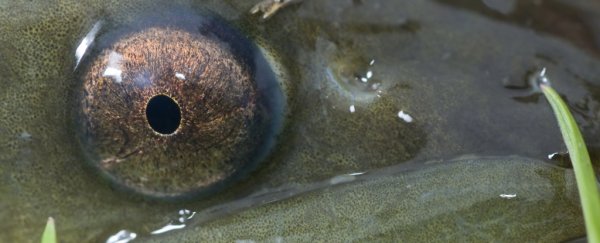The presence of illicit drugs and their metabolites in river water is a new and growing type of environmental hazard - and, according to new research, is putting at further risk an already critically endangered species of eel.
The European eel spends its life living in waterways across Europe, migrating to the ocean to breed and then die. The young then make their way from the ocean back inland again, repeating the cycle.
In recent decades, however, their numbers have declined dramatically, thanks to a combination of factors such as toxic pollution, overfishing, parasites, climate change, and hydroelectric dams.
In recent years, it's emerged that cocaine and its metabolites could be a problem, too. A 2009 study found cocaine in Belgian rivers and wastewater plants in concentrations from other regions across Europe.
A 2012 study then found that exposing European eels to 20 ng/L of cocaine for a month left trace amounts in their body tissues which, the researchers reported, could have an effect on their physiology and contribute to their decline.
Now researchers from the University of Naples Federico II have demonstrated this is indeed the case.
Biologist Anna Capaldo and colleagues divided 150 eels into three lots of five groups of 10 - untreated control, vehicle control, cocaine exposed, and two post-exposure recovery groups. They dosed the exposure groups with 20 ng/L of cocaine dissolved in ethanol, the mean concentration detected in surface waters.
This was delivered daily for a period of 50 days. The cocaine-dosed eels were hyperactive, but there were other problems too.
The team found accumulations of the drug in the brain, muscles, gills and other tissues. There was swelling and breakdown of the muscle tissue, not dissimilar to rhabdomyolysis, a serious condition in which muscle tissue rapidly breaks down.
This could seriously hinder the eels' ability to travel the long road of up to 6,000 kilometres (3,728 miles) to the sea to reproduce, the researchers said.
"Our results suggest that cocaine, at environmental concentrations, could compromise both the sustained swimming, ensured by the slow red muscle, and the burst swimming, ensured by the fast, white muscle," they wrote in their paper.
Since it's not likely that drug use is going to stop anytime soon, or anyone with a snoot full of coke is likely to stop and think of the eels, the best solution is probably infrastructure - with better water treatment plants to prevent the drug from reaching eel habitats.
The research has been published in the journal Science of the Total Environment.
